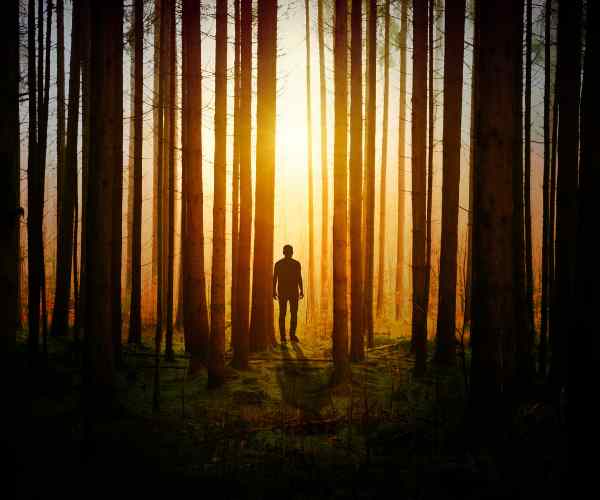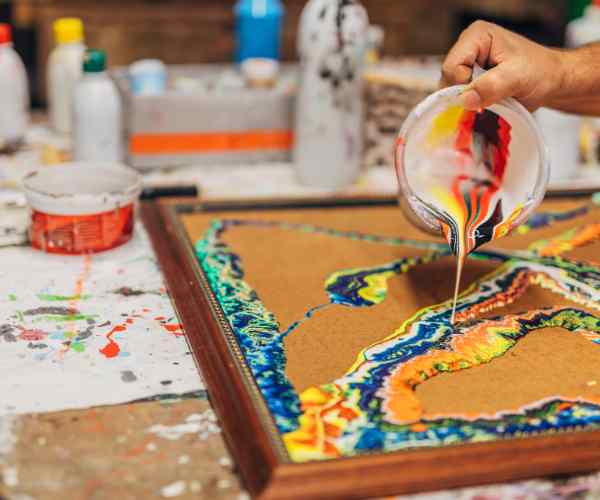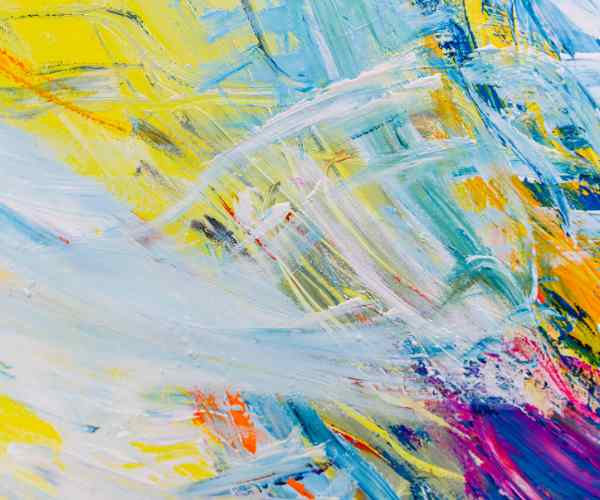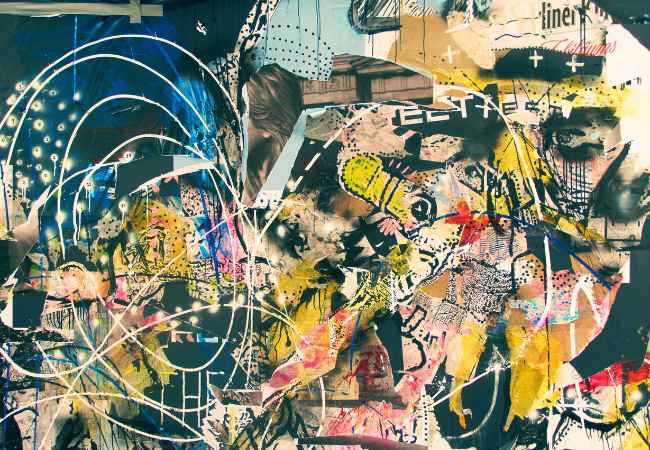Exploring the world of digital art brushes opens up a vibrant realm of creativity.
Begin by picturing yourself in a jam-packed art studio while the scent of wet paint and the sound of brushes sweeping over a canvas greets you. Now, take this sensation by introducing it into the virtual world, where brushes are no longer just instruments but rather doors leading to boundless opportunities.
Artistic rebels create their visions by using custom brushes in Adobe Photoshop and these brushes transform from pixels on a monitor into the magical tools that artists unleash upon the world. Whether you are an experienced expert or a budding amateur, Adobe photoshop brushes give you the freedom to delve into new patterns which enable you to work around with styles which are otherwise difficult to get within non-digital mediums.
The concept of digital art is developing exponentially in modern day which in turn has transformed the way we perceive art. Artists have made their voices known through digital platforms and software, straying away from traditional mediums, but for us to understand, it’s important to understand their tools. And that’s where art brushes come in, which have something new to offer while simultaneously trying to feel and work as a traditional art brush.
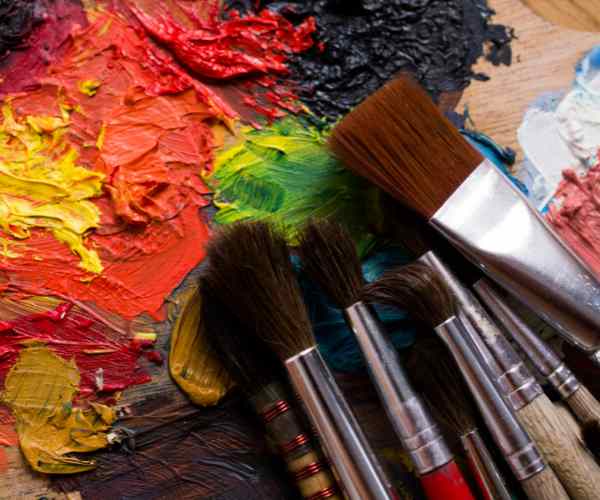
The Basics of Digital Art Brushes
What Are Digital Art Brushes?
So, what exactly are digital art brushes? Consider them the same as tools found in a painter’s palette but for your favourite digital art software. These brushes are set in the digital realm and steer you to make anything from soft watercolors to strong, sturdy strokes with simply a click or a swipe.
To paint with digital brushes isn’t simply just coloring but manupulating a three dimensional object that can react against color, tilt or speed. This means adding intricate details while having rich textures blended can offer the stunning effects that pop your work. While digital art brushes are able to simulate the performance of ordinary brushes, they have unique functions that ordinary brushes do not offer.
For example, color layering doing a similar function with a digital program watercolor brush painting over the target area allowing for a lovely mist soft relaxing feel that doesn’t get messy from painting. Due to the imaginative boundaries digital brushes allow for, they have become an integral part of an artist’s toolkit.
Comparison with the Common Brushes
Under this section, it is best if we approach the brushes from a historical angle. For example, if you take a look at an oil painting brush, a real oil painting brush is considerably more efficient than a digital one. But of course, it requires physical paint, a canvas and a small bit of cleaning afterwards. The first stroke from the brush will probably take more than a few hours of prepping, if you take into consideration the ratio of color to canvas.
The benefit of using a digital art brush is that the process is made incredibly less complex than mix and paint every single shape one by one. Instead, grabbing multiple brush types is as easy as searching on the web and the need for cleaning after use is eliminated since a digital picture does not exist.
Although, it has to be stated that both types have their advantages and disadvantages. While traditional brushes are something most artists still enjoy and use, the proliferation of digital tools has made it significantly easier to use with countless choices. The possibilities of employing both styles are hence very large, making the whole experience much richer as an artist.
Different Category of Digital Art Brushes
Now that we have a basic understanding of what is a digital art brush, let us take a look at the different kinds that exist, and how they can help you with your artwork.
Paint Brushes: Understanding Their Styles (Oil, Watercolor, Acrylic)
When it comes to digital paint brushes, the variety is as extensive as it’s in the real world. For example, you can create oil paint Lions Paints Brushes which allows you to apply that rich buttery texture that only Oil painters enjoy. These are usually designed with thick textured strokes that one would expect from oil paints with adjustable configurations.
Watercolor paint brushes allow one to combine any watercolor technique by virtue of them being thin and transparent. This means that you can combine any water color methods and still feel and appear as if you are empowered with the dominion over the watercolor which is always a delicate art. Their tendency to aid in perfect blending enables smooth gradations between colors and this especially comes in handy when creating stunning scenery or beautiful portraits.
Then there is the acrylic paint brush. These paint brushes hover in between oil and water color in terms of thickness and delicacy which is oil and water respectively. So this type of brush is perfect for people who wish to add bright colors to their artworks.
One can easily conjectured that texture brushes are the digital artists’ secret weapons. They add to the depth and 3d rendering to the works thus making something flat turn into something stunning and 3d. Real brush textures such as a fur coat or rough and textured wall take an artwork to a whole another level.
By using texture brushes, you are able to replicate these effects in a digital setting. They can vary in styles, starting from rough gritty textures, to soft and feathered strokes. They can be used on top of the base colors in order to enhance the artwork visually.
Special Effects Brushes: Discussing Options That Are Out of the Box Such As Glitch and Splatter Brushes
In case you want to add some bling in your work, or would want to spice it up, then special effects brushes are the ones you should consider. Splatter brushes add life and make the art work seem more exciting, and are perfect if you want to add a splash of color in pieces where abstraction is the key. Think of it as throwing paint across a canvas and doing it for effect, that’s exactly what digital splatter brushes do for you without the mess.
For instance, there are glitch brushes as well which you can use to give your art to get a modern and edgy look, as these mimic the disruption which sometimes happens in digital media. These brushes can assist in achieving various types of effects that are associated with the modern era for those who are more into art related to technology.
Custom brushes: Why would you want anything other than making your own?
One of the most enjoyable features of doing art in a digital environment is the capability to make your own brushes. Custom brushes provide artists a possibility to create tools that are ideal for their style and methods.
In a way, making your own brush feels like designing a magic wand just for yourself. You can fine tune settings for certain effects, use different shapes and textures and create brushes that nobody else will.
This can be an exhilarating undertaking for most artists, not only because it broadens their artistic scope, but also helps to grab and nourish them during the creative stage. If you’ve ever wished that there is a brush somewhere that you could use, here is the chance to make such a brush!
Choosing the Right Brush: Worth a Lot!
How Brush Selection Influences Your Artwork
Choosing the right brush becomes a crucial step if you want your piece to excel. It’s like the decision of what equipment to carry to a building site, each has its role and the carrying of the appropriate equipment will have a great effect on the result.
The moment I decided to venture into the universe of digital artwork, I was gifted with a multitude of brushes to work with. It is strikingly easy to grab the one that is at hand, which for me was the case for the longest time. However, the moment I began scrutinizing the brush I was to use, my use, or shall I say, my work began to morph in unprecedented manners.
For instance, while working on a portrait, I applied the basic round brush to the skin tones. The illustrator in me died a little, as the portrait ended up looking flat and dull. Then came the soft round brush, which had a bit of texture. The skin of the subject started to look like it was alive, glowing, and filled with depth. The Round brush selection coupled with soft transitions and realistic highlights ended up increasing the overall quality of the poster significantly.
But, how does this help you in practical scenarios? In order to get the best out of your art, it is pivotal that you understand how the brush you are using affects the tone, texture, and feel of your work. With the correct brush in hand, you can find a new muse, new ideas and concepts and turn your artistic vision into reality.
Real Life Story of an Artist and How Brush Affects Their Work
Let us consider the story of my friend Sarah, who is a skilled digital illustrator. In the beginning, when she started doing digital art, she mostly used default standard brushes for painting. Her pieces were okay, but they lacked the appropriate charm. One day over a cup of coffee, she complained to me about her flat paintings. I told her that I want her to try various brushes. She listened to me, and she spent some time online looking for custom brush sets for illustration. It is at this moment that she began using specialized brushes—textured and custom stamps, and the world was simply not the same anymore. Wind-swept trees began appearing in the sky while broader landscapes lit up with the glow of vibrant sunsets. Sarah’s evolution was astonishing, she shifted from an upcoming artist to a sought out professional, whose work would leave viewers speechless. It is truly wonderful how painters are able to mould their intent into their pieces by using the best brushes and furthering their career.
Brush Selection Tips for Beginners Depending on the Style and Medium
If you are at the start of your digital art adventure and not really sure how to pick right brushes, here are a few tips I can share that would work for you:
Define Your Style: Is it realism, abstract or illustrative that you are comfortable with? Each style usually requires the artist to pick specific types of brushes. Take some time to articulate what appeals to you.
Use Free Brush Packs: Many programs provide complimentary brush pack so you are not making any financial loss working on them. Get a few brushes in different packs and use them. Do not be afraid to play with the options until you get the right one.
Apprehend Brush settings: Learn how different aspects of a brush can alter its working: setting it up for pressure, opacity and even flow can drastically change your artwork. These are settings worth playing around with.
Ask for community help: Interact with distinct art communities and forums to find out the kind of brush sets people use. Your favorite artists have a remarkable stash of classics, you may find something that will be at par with your requirements.
Make the Purchase Fearlessly: It’s true there are tons of free brushes available all over the internet, however getting a nice brush pack from some good artist may get you the best answer at times. These brushes usually provide countless of settings and can serve you well in the future.
Tools of the Trade: Digital Art Software
Let’s Take a Look at the Most Popular Software Options on the Market
So let us go to the tools of the trade already- the digital art software! There is a multitude of popular options, each with its own advantages.
Adobe Photoshop: Without any doubt, this is the biggest brand name in digital art software. It has access to hundreds of brushes and tools which means it can be utilized for digital painting and for photo editing as well. That said its highly customizable although for new users it can be a bit complicated.
Procreate: This is a user’s holy grail if they have an iPad. It is easy to understand, visually appealing and comes with a broad selection of different brushes for different styles. One of the greatest benefits is the fact they are portable making it easy for artists to draw whenever they want to.
Corel Painter: The ideal software for anyone wishing to transfer the actual feel of painting to a digital environment. It has an enormous brush library that accurately reproduces real-world materials.
Clip Studio Paint: This software is particularly useful for cartoonists and illustrators as it offers vector tools and brush editing options. The software combines painting and drawing features pretty well.
Need To Differentiate Between Inbuilt Brushes and Downloadable Brushes
All of these software packages have some inbuilt brushes included, which are not only helpful to novices but are also good enough as a starting point for experts. They offer a variety of styles and textures that cater to a range of artistic needs.
On the other hand, Stubtizer Brushes are a must innovations for many artists who prefer to create their own textures, styles, effects and much more. So isn’t it worth investing time in relationships with resemblance and relationship tools? I think so!
Its like building up your own toolbox the more tools that you have at your disposal the more you can make!
Learning The Ropes Of Using Digital Art Brushes
How To Best Use Digital Art Brushes
Okay, so you have selected and bought your brushes and your software, now its time to learn how to use them! So let me share some tips on how to maximally use a digital art brush:
Techniques of Layers: Begin with the base and work upwards for a single color with various brushes. For example, use a flat brush for the base color and add a texture brush on top.
Putting the pressure sensitivity to good use: If your tablet has this capability, try using pressure sensitivity. This feature enables you to apply various line weights and the opacity of the brush resulting in the enhancement of your designs.
Playing Around with Blending Modes: Do not feel shy to work with the blending modes in the software you are using. They can completely alter how you joint colors as well as provide impressive effects.
Going Close Up: It is simple to understand the overall concept but quite difficult at times to see the smaller details. Zooming in can help you work your details out better.
Taking a break: Getting away from your work can enable you to view it in another angle. Other than that, there are going to be parts which you did not pay close attention to or adjust when you tackle them again.
How to Complete Use of Different Types of Brushes for Different Types of Effects Guide
In order to further understand let’s look at how to go through use of another type of brush to achieve different effects.
How to achieve realistic skin tones: During this process begin with a soft round blush to act as the first layer for a deeper blush. Then layer a smaller, rougher brush over it for decorations like bumps, acne, and other details, finishing with a smoother blending brush to help the gradients blend in more seamlessly.
Painting Landscapes: To create broader strokes, you first apply a flat brush (to establish shapes), then, switch to a texture brush to create foliage and clouds. Finally, grab your soft round brush to create some highlights in the sky.
Adding Textures: Apply a texture brush over a flat color to add depth. This is most useful when applied to some fabric or background.
An Encouragement for Artists to Work with Pressure Sensitivity and Blending Modes
Remember, the greatest charm of the digital canvas is in the exploration of its features. Please do not be afraid to change your blending modes and settings for your brush.
For example, if you are working with a soft brush, set the opacity lower so that it can give a soft gradient effect. On the contrary, if you are looking for something bolder, use a hard brush and adjust yourself to working under various layer modes. It’s a fun ride and guarantees that as you pivot, you theoretically end up with countless different techniques!
Artists Demonstrating Art Brushes in Re-Touching
Shall We Introduce Some New Artists Who Are Brilliant to Use Digital Art Brushes?
We are keen to highlight those artists who are, in our views, superb at using a digital art brush:
Loish: A Dutch artist, Loish is very famous for creating digital art and it happens to be that she possesses a particular style that is her own which includes the combination of bold colors and beautifully designed compositions. Her strokes make the work more dynamic by bringing life to her characters and the backgrounds. On her twitter account, Loish shares her brush settings as well as her techniques and inspires numerous artists to acquire the previously mentioned.
Brittany Lee: Strikingly, she is not just a designer and illustrator but an outstanding one. Lee uses digital brushes to draw up fantastical and alluring settings. In this case, the artworks become interactive due to her employing texture brushes, as viewers wish to touch them Lee often mentions brush choice in her tips, how some storytelling elements used in particular illustrations can be effectively and exclusively done with the use of appropriate brushes.
Scrutinize How Their Brush Methods Improve Their Artwork.
Both of the artists explain that if the brush techniques are good the artwork can go on to become exceptional. Loish on the other hand is very good at evoking emotion through her brush strokes and that is why there is a rapid rapport with her audience.
Likewise, the careful application of texture by Brittany Lee invites viewers to delve into imaginations that she has created. If we learn these myriad techniques we can understand how to best use the power of digital art brushes to enhance our work.
FAQs
If I am a beginner, which are the best digital art brushes to use?
If you are a newbie in digital art, it’s normal to be intimidated with the array of brushes available to you.
For starters, I would suggest you begin with a couple of multi use brushes that will allow you to experiment with various styles without making things too complicated.
Basic Round Brush: This is your go to brush for almost all purposes! It can be employed for general painting, outlining, sketching and even detail work.
Soft Round Brush: Smooth round brushes are considered to be perfect for color blending and softening while round brushes are both efficient for portrait work and art forms that need edges to be slightly blended.
Textured Brush: Adding natural textures to your artwork, especially canvas or watercolor paper, greatly adds to texture. The components of a good brush must always be checked to ensure quality outputs.
Flat Brush: Sharping edges and blocking large areas of a color is made easier by this brush thus making it a needed asset to your collection of tools.
Watercolor Brush: Whether it be painting over or blending in, enclosing a specific area can be done better with the use of basic watercolor brushes; So if your preferred color style is the soft flavor, fluid watercolor color, make sure to buy a few basic watercolor brushes.
While venturing with different painting media, these brushes can help you gain confidence as the span of different stroke techniques and styles through each of the brushes is rather broad.
Is it possible to design custom brushes on software applications like Photoshop?
Without a doubt! Custom brushes made in Photoshop are some of the best brushes one can use when working on a digital project when wanting to delve into the world of art.
By having the ability to create brushes, allows you to fulfill the needs that come with your artistic style.
To create a custom brush, simple shapes and textures can be used as starting points. To summarize them in an orderly manner, here is a brief guide for you:
Pick a document type: Draw or paint the texture or the shape that you want on a new one you created using a transparent background.
Art selection: Use the selection tool to pinpoint the area to be highlighted for circumventing converting into a brush.
Give it a name: Click on the “Edit” tab and find “Define Brush Preset”, for this new brush you created, make sure to specify a label.
Change the settings: After you have made your brush, you can change the brush settings which include size, spacing and dynamics to fit your liking.
This is the beauty of digital art that there are no boundaries, no limits, you can always create new tools according to your needs instead of being restricted to the default options.
What’s the difference between a vector and raster brush?
Knowing the distinctions of raster and vector brush is important for a digital artist since it can help you in how you execute your art and also how it’s going to come out in the end.
Raster Brushes: These brushes are pixel oriented, meaning that they consist of small squares which are known as pixels, Upon zooming into a raster brush, u will notice distinct pixels. This enables the creation of attractive surfaces and intricate details, which makes raster brushes suitable for art and illustration. However, because raster graphics are made up of images in various sizes, poor quality can occur, so they can only be utilized for projects that have a specific size predetermined.
Vector Brushes: Unlike raster brushes that characteristically exhibit the convergence of texture, vector brushes are distinct in their unique ability to be rotated, resized or distorted without the risk of pixelation. This makes vector brushes ideal for designing illustrations that necessitate fine edges for logos or typography. However, vector brushes may not possess the same texture or deep blending effects that raster brushes do.
In the modern day array of digital art tools, both elements are essential. This is evident from the fact that numerous artists today use both vectors as well as Rasters frequently.
How do I install the brushes into my Software if I want to add new ones?
If you are wondering how to add a new brush to your collection, the process is generally pretty simple and even though the steps differ from software to software, the difference is in the minute details.
For example, in Photoshop here is an easy procedure to follow:
Get your brush file: For Photoshop users the file will usually be in the A.B.R format.
Start the Photoshop: Start the application and ensure that the project you are working on is open.
Brush panel: Under Window brush panels, go to the options and select Brush Panels.
Import your brush: In the upper right hand of the Brush panel click on gear icon and choose the option “import brushes”. Once this is done click on the “open” option after selecting the brush file.
Pick the brushes: Each time you import a new brushes, it will be listed and available for use!
Installation procedures may differ across different computer programs, and so a thorough look at the documents for the required program to get details on the installation would be wise.
What about free digital art brushes, are they at all useful?
Of course, they are! For starters, Free digital art brushes are especially useful.
Most artists have their brush sets available on the internet which means you can try out a whole bunch of brushes without shelling any money out. In case you still don’t believe in the free brushes, here are some reasons that will take out your doubt, as to why they are worth your time:
Freedom: Free brushes are usually published with multiple other styles so you can try them all without paying.
Great chance of learning: By using other brushes, you get a sense of how brush dynamic textures and other skills operate.
Community: There’s a large community of artists who offer free brushes that they created in order to promote their works, and to download these brushes is to become a part of this community.
Great chance to Experiment: Free brushes give you an opportunity to experiment new things. If you like a certain brush, you could always go back to that artist later on and buy other types of brushes that you prefer.
Nonetheless, simply ensure that the artist of the brush has a good reputation and the quality of the brush is rather high. A thorough examination of the artist’s portfolio will make it evident if you will make the right choice by purchasing the brush.
Conclusion
Engaging with different brushes adds an unexplored dimension of thrill and creativity as we wrap up on this note which can only be imagined but never quantified.
Ordering appropriate brushes does make a difference as any brush can elevate your craft to the level that it becomes art.
I can only invite you to try different styles or simply have more fun with the brushes you enjoy using the most.
Do not hesitate if you find a brush or two that match your style, because the right style only needs to be embellished.
Do give me your perspective about your experiences with a digital paint brush! Feel free to shed some light on your experiences, the brushes that intrigued you the most, or any advice that you would like to share, in the comments section. We can motivate each other!

